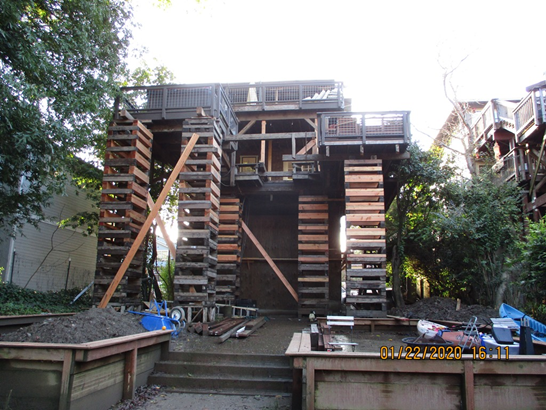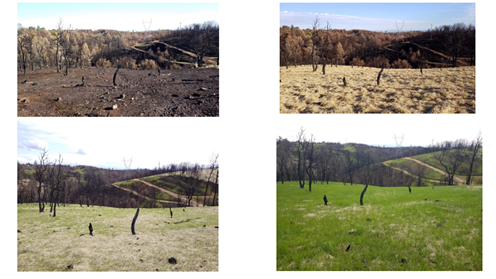Prepare California
The California Governor’s Office of Emergency Services (Cal OES) provided funding focused on building community resilience amongst vulnerable individuals living in the areas of the state most susceptible to natural disasters. The Prepare California Initiative made efforts to reduce long-term risks from natural disasters, such as flooding, earthquakes, wildfires, landslides, extreme heat, and drought by investing in local capacity building and mitigation projects designed to protect communities.
Prepare California leveraged funds approved in Governor Gavin Newsom’s 2021-22 State Budget. It was designed to provide access to federal match funds for community mitigation projects that vulnerable communities would otherwise be unable to acquire. This program was focused on communities that are the most socially vulnerable and at the highest risk for future natural hazard events. The state identified communities by prioritizing California census tracts according to their estimated hazard exposures and social vulnerability.
Program Focus Areas
Funding under the program went to support projects addressing concerns in one or more of the following focus areas:
- Local Capacity Building – Actions that will improve local capacity building to mitigate and recover from natural disasters including enhancing local resilience staffing support, scoping for future mitigation projects, and community outreach.
- Whole Community Risk Reduction – Mitigation plans and actions that integrate a whole community risk reduction approach. Activities should protect significant portions of the community by addressing entire neighborhoods, districts, or populations.
- Whole Community Approach – Engaging the full capacity of the private and nonprofit sectors in conjunction with the participation of local, tribal, state, territorial and federal government partners while ensuring the inclusion of children, individuals with disabilities and others with access and functional needs, those from religious, racial, and ethnically diverse backgrounds, and people with limited English proficiency.
- Protection of Life and Property – Actions taken to reduce or eliminate long-term risk to life and property from natural hazards and their effects such as retrofits of buildings or structures to protect them from a hazard or removal of structures from a hazard area. Includes acquisition, elevation, relocation, establishment of defensible space, and structural and non-structural retrofit.
- Public Education and Awareness – Actions to inform citizens and elected officials about disaster preparedness or individual and community actions to mitigate natural hazards.
- Nature-Based Solutions to Hazard Risk – Actions that minimize hazard loss by preserving, mimicking, or restoring the functions of natural systems. Includes sediment and erosion control, stream corridor restoration, watershed management, forest and vegetation management, natural coastal protection, green stormwater management, and wetland restoration and preservation.
Prepare CA Funding Programs
 Funding under this program enhanced whole community resilience and hazard mitigation capacity building at the local level:
Funding under this program enhanced whole community resilience and hazard mitigation capacity building at the local level:
JumpStart
Allocated $15 million in state funding dedicated to help jumpstart eligible communities in their development and implementation of resilience planning and activities.
The program provided support to augment resiliency staff at the local level to develop local initiatives that directly and primarily benefit eligible socially vulnerable and high-hazard risk communities. Resiliency staff focus on mitigation planning and implementation, community education on mitigation, recovery planning, and/or future mitigation project scoping.
Match
Allocated $85 million in state funding to cover the required non-federal cost share for eligible communities and projects applying for FEMA’s Hazard Mitigation Grants Program (HMGP), Building Resilient Infrastructure and Communities (BRIC), and Flood Mitigation Assistance (FMA).
Provided enhanced technical assistance and match funding to qualified entities applying for the FEMA Hazard Mitigation Assistance programs to develop projects and activities that directly and primarily benefited eligible socially vulnerable and high-hazard risk communities and reduced risk to loss of life and property from natural disasters within the FEMA HMGP requirements.
Timeline for Funding Opportunities
| January 14, 2023 | Cal OES submits HMGP (with PrepareCA Match) selections to FEMA for further review |
| Late 2023 onward | FEMA awards 2022 BRIC and FMA projects after completing programmatic and Environment and Historic Preservation (EHP) reviews |
Submission Process
Prepare California Match
Eligible PrepareCA Match subapplicants applied for PrepareCA funding by applying for the Hazard Mitigation Grant Program (HMGP) and following instructions designating the HMGP subapplication as a PrepareCA subapplication. Instructions were provided in the Notice of Funding Opportunity (NOFO).
Prepare California JumpStart Round 2 Webinar
Eligible Subapplicants
- Tribal Governments – Subapplicants must have a FEMA-approved tribal hazard mitigation plan in order to be eligible.
- Local Governments/Communities/Special Districts – Subapplicants must have a FEMA-approved and adopted Local Hazard Mitigation Plan (LHMP) in order to be eligible.
- Private non-profit Organizations – Private non-profit Organizations are not require to have a LHMP, but the County in which they are located must meet the LHMP requirement (not eligible for JumpStart, BRIC, or FMA).
Projects must benefit communities that meet the Hazard Risk and Social Vulnerability Criteria. The above entity types can seek funding under Prepare California
FIGURE 3: An HMGP-funded slope stabilization project within the burn scar of the Carr Fire prevented soil erosion and runoff into water sources. These photos show a slope before and after the hydroseeding and other erosion control measures were implemented

Additional Resources and Guidance Documents
Prepare California Jumpstart Application
Prepare California JumpStart is a competitive $15 million dollar grant program that provides Technical Assistance (TA) and State funding to eligible socially vulnerable and high hazard risk communities. Through this grant program, eligible communities can develop local initiatives that foster resilience via capacity building, mitigation and preparedness activities, community outreach/education, response and recovery planning, and/or project scoping. Each application may be up to $1 million dollars in State funds, and applicant entities may submit multiple applications for distinct activities and initiatives.
Do not start this application until you have thoroughly read these instructions. Failure to do so may result in resubmission of this form by the applicant. Cal OES requires this form be completed for all Prepare California JumpStart applications.
The Prepare California Jumpstart application is not currently available due to technical difficulties, Cal OES anticipates the application will be available early next week. Please reach out to HMA@caloes.ca.gov with any questions.
2022 Prepare California Jumpstart Webinar Presentation
FINAL Prepare California JumpStart Round Two Webinar V2This webinar presentation includes: Program Overview, Eligibility, and Application Review
2022 Prepare California Notice of Funding Opportunity
The California Governor’s Office of Emergency Services (Cal OES) is pleased to announce the 2022 funding opportunity for Prepare California Match for the Building Infrastructure and Communities and Flood Mitigation Assistance Programs.
- 2022 Prepare California Match – BRIC and FMA Notice of Funding Opportunity
- 2022 Prepare California JumpStart Notice of Funding Opportunity
Social Vulnerability & High Hazard Risk Community Criteria and Map
Cal OES conducted a statewide analysis to guide Prepare California eligibility to ensure funding is directed to the highest risk, most socially vulnerable communities. In this analysis, we consider five hazard types facing California communities: wildfires, earthquakes, floods, drought, and extreme heat. To identify communities that might benefit most from support to implement hazard mitigation projects, we 1) attempt to objectively estimate community exposures to each of these hazards across the state, and 2) link these estimates to a commonly used measure of social vulnerability, the Social Vulnerability Index (SVI) published by the Centers for Disease Control and Prevention (CDC) and data on median income.
This analysis is done at the census tract level. All census tracts with available data are ranked from lowest to highest in terms of their overall hazard exposure and social vulnerability, and then assigned a percentile rank relative to all other census tracts in the state. This ranking ranges from zero to one, where a higher rank indicates greater estimated hazard exposure or social vulnerability. For example, if a census tract has an overall hazard percentile rank of 0.75, 75% of census tracts in the state should have lower hazard exposure than that tract and 25% should have higher exposure.
Our approach to estimating hazard exposures attempts to characterize the relative likelihood of an event occurring in a particular census tract using available data. We do not attempt to estimate the population, economic, or business damages that would result from a disaster event.
Technical Assistance
Our subject matter experts are available to discuss funding availability, technical feasibility, EHP requirements, the application process, or other related matters.
For assistance with PrepareCA Match, please reach out to HMA@caloes.ca.gov.
For questions specific to the PrepareCA Jumpstart program, reach out to PrepareCAJumpStart@caloes.ca.gov.
First Round of Prepare California JumpStart Awards
Cal OES awarded nearly $4.5 million to six applicants through the ‘JumpStart’ portion of the Prepare California Program. Ranging from cities and counties to Tribal Governments and private non-profits situated all over the state, this funding will support local capacity building to enable investment in infrastructure improvements designed to protect people and property.
Awardee information can be found here:
Cal OES Awards First-Ever Resiliency Funding to Disaster Vulnerable Communities | Cal OES News
